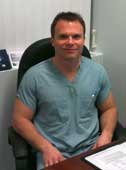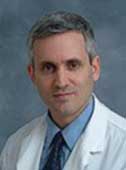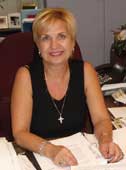"Renovating Undergraduate Education"
 David Backstein
|
The Undergraduate Education
Program in the Surgery
Department is managed by
David Backstein, Yaron Shargall
and Carmela Calorendi with
assistance from the coordinators
in each of the three undergraduate
academies.
The time available for undergraduate
surgical training has
been reduced in order to accommodate expanded time
for disciplines such as Family and Emergency Medicine
and allow for new longitudinal experiences such as the
"Clerkship Portfolio". Nevertheless, the surgery rotation
accomplishes a great deal in the 8 weeks allotted over the
course of the third year.
|
David Backstein completed his undergraduate and
residency training in Surgery at the University of
Toronto, an Orthopaedic Fellowship with Allan Gross
and then a John Insall Travelling Fellowship in Knee
Surgery, visiting centers throughout the United States.
He completed a Masters Degree in Medical Education
with Richard Reznick, Michael Cusimano and Carol
Hutchinson. David and his wife Marcie and have two
children Nicholas, 10 and Lauren, 8.
|
The undergraduate surgery rotation begins with a five
day "Crash Course in Surgery" consisting of intensive
training using lectures, skills lab simulators and models.
An Advanced Trauma Life Support module is conducted
at St. Michael's Hospital organized by Jameel Ali, using
the Sim - man trauma simulator. During the Crash
Course, students learn to tie, suture, cast fractures, catheterize,
perform lumbar punctures, drape and place chest
tubes in this intensive and well - coordinated training
program. For example, after a one hour chest trauma
lecture, they place chest tubes in a simulator; after the
orthopaedics lecture, they are taught how to apply a cast.
Following the highly concentrated crash course at the
beginning of each rotation, students spend 7 weeks on
the surgical wards and in the operating room. Students
report that they are more comfortable on the wards after
the Crash Course and the evaluations of the program
support this. The advantage of this format is that students
are not pulled away from the clinical setting to
attend lectures intermittently throughout their clerkship.
The disadvantage is the intensity of the experience, an
overload of information in a short period of time.
|
While Surgery no longer has rotations in both 3rd and
4th year, it may take place for an individual student
anywhere between September of the third year and
December of the fourth chronological year. In this way,
all students have been exposed to surgery before the
residency match. An additional one month selective in
either Surgery or Medicine is mandatory for all students
at the end of their final year. In addition to rotations in
any of the Surgical subspecialties, surgical selectives will
include options in ambulatory surgery, surgical research
and rural surgery.
 Yaron Shargall
|
In the new curriculum, students
are now evaluated with
two centralized objective structured
clinical examinations
during the clerkship. Within
the Surgery rotation they are
assessed using the surgical component
of the National Board
of Medical Examiners (NBME)
Shelf exam and a structured
oral examination. The NBME
is an excellent exam on which our students do very well.
Students get a mid - term evaluation in addition to their
examinations. Teacher effectiveness scores are quite high
in the Surgery Department with an average of 15 on a
scale of 20.
 Carmela Calorendi
|
Yaron Shargall has developed a program to integrate
undergraduate surgical education into the community
hospitals. This program has been very well received by
students and faculty. Carmela
Calorendi has been managing
the Undergraduate Program
for 23 years. She coordinates
with Liz Doherty, Michelle
Dominey and Renita Yap who
manage surgical offices at each
of the academies. These coordinators
have been very effective
in balancing the number of
students on electives to control
overcrowding.
The success of the undergraduate surgery program is
clearly evident. Historically, about 24% of the U of T
graduating class apply to surgical programs.
M.M. |